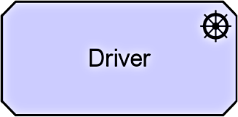Motivation Aspect
The Motivation Aspect presents the motivations or reasons that guide the eArchiving Reference Architecture design. It aims to answer the questions of “Why do I need eArchiving?” and “What are the benefits of implementing eArchiving?”
Internally the motivation aspect includes the elements of stakeholders, value, drivers, assessments, goals, outcomes, principles, and requirements. The motivation aspect connects specific stakeholders like archives or data creators to particular needs and benefits like improving transparency or ensuring customer satisfaction.
One of the most critical components within the motivation aspect is drivers or the factors that influence stakeholders’ motivation. Drivers can originate from either within or outside an organisation. Internal drivers, also called concerns, are associated with stakeholders, which can be an individual or group, such as a project team, the entire organisation, or society. Examples of such internal drivers are customer satisfaction, compliance to legislation, or profitability. However, drivers of change may also be external to the organisation (e.g. economic change or changing legislation). The Motivation Aspect follows the motivation metamodel as defined by ArchiMate®. It covers the following elements of the model:
|
Element |
Definition |
Notation |
|---|---|---|
|
Stakeholder |
The role of an individual, team, or organisation (or classes thereof) that represents their interests in the effects of the architecture. |
|
|
Driver |
An external or internal condition that motivates an organisation to define its goals and implement the changes necessary to achieve them. |
|
|
Goal |
A high-level statement of intent, direction, or desired end state for an organisation and its stakeholders. |
|
|
Principle |
A statement of intent defining a general property that applies to any system in a certain context in the architecture. |
|
|
Requirement |
A statement of need defining a property that applies to a specific system as described by the architecture. |
|
Requirements will be added later.

